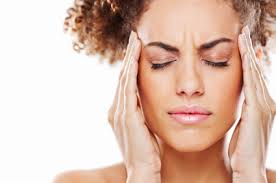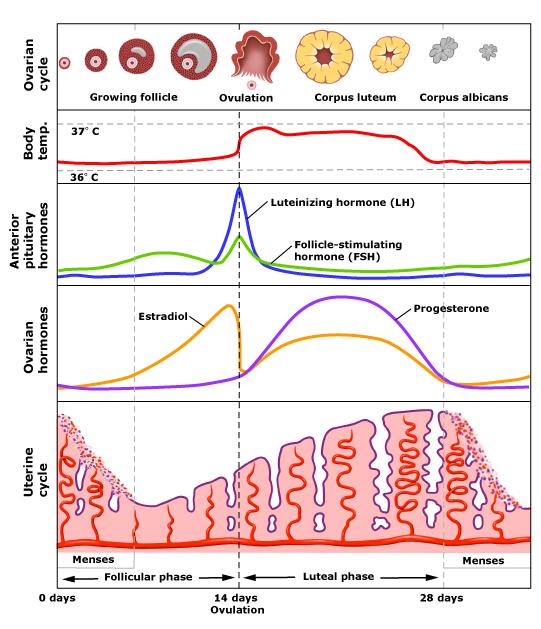I am a seasonal headache sufferer. Usually around this time of year, I suffer from multiple headaches a week, usually triggered by the constant changing of weather where I live. Sometimes they don’t last for very long, and sometimes it seems like multiple days before they disappear. Rarely they seem intense enough to be migraines, but it made me wonder how many people actually struggle to identify what their headaches actually are, especially considering how many types of headaches there are.
So today I want to break down what some of the most common headache types are, how to identify them, and what you can do about them!
Tension Headaches

Areas where tension headaches are common. Photo credit: healthwise incorporated
Tension headaches, also called “stress headaches,” are the most common types of headaches, affecting most people at least once in their lives. The pain from these headaches are said to be mild to moderate dull aching chronic pain that comes and goes over time. The pain from tension headaches does not throb. The pain can hurt all over the head, but is most common in the temples or the back of the head and neck.
Along with typical headache pain, tension headaches can also cause tenderness or sensitivity around the neck, forehead, scalp, or shoulders, though these symptoms are not always present.
The typical treatment for tension headaches is over the counter pain medications such as Tylenol, ibuprofen, or Excederin Tension Headache.
Cluster Headaches
Whereas, tension headaches are the most common and least severe, cluster headaches are the least common but the most severe.

Area affected by cluster headaches. photo credit: Just Healthy Way
These headaches are characterized by intense burning or piercing pain usually behind the eyes and on one side of the face. Nasal congestion, eye watering, a feeling of restlessness and inability to get comfortable accompany these types of headaches.
Cluster headaches get their name from the nature of their occurrence. These headaches occur in groups over a period of time anywhere from a period of a couple weeks to a few months and usually with 1 to 4 headaches a day around the same time a day. Sufferers can go then months or years before another episode.
Over the counter pain medications do not treat cluster headaches and prescription medications such as sumatriptain are often the most effective treatment. Oxygen therapy has also been known to help with cluster headaches.
Migraines

Migraines affect a large area of the head. Photo Credit: Homeopathic treatment
Migraines are characterized by an intense pulsing from deep within the head that usually begins in the forehead, side of head, or around the eyes and gradually gets worse overtime. These headaches can last a few hours to a few days.
Migraines prevent the patient from being able to perform daily activities due to the intensity of the pain and the other symptoms. Many migraine sufferers also experience light, noise, and smell sensitivity, nauseas, vomiting, loss of appetite, upset stomach, and belly pain, although many other symptoms are known to accompany migraines.
1 in 5 people experience aura with their migraines. This is usually characterized by flashing lights, shimmering lights, zigzag lines, stars, or blind spots, although everyone experiences auras differently.
The cause of migraines is unknown, but research thinks that genetics may play a part. In many cases, migraines are associated with some sort of nervous system condition.
One of the most effective ways to treat a migraine is to prevent it. This is difficult though due to the high number of potential triggers that may cause migraines. Usually, more than one trigger is needed to cause a migraine, a few of which include, but are far from limited to, sleep disruption, dehydration, skipping meals, hormones, chemicals, and changes in weather.
Many people choose to take over the counter pain relief for their migraines along with a mix of natural remedies such as essential oils, ice packs in the head or neck, and rest in the darkness. However, if pain cannot be managed by over the counter medications, triptains prescribed by the doctor are often effective to relieve pain.
Sinus Headaches

Sinus headaches often “radiate.” Photo credit: Just Healthy Way
Fun fact: 90% of “sinus headaches” are actually misdiagnoses migraines since the pain is very similar. However, real sinus headaches are caused by inflamed sinuses, usually due to a sinus infection, thus making them a “secondary headache.”
Sinus headaches usually cause pain in the cheeks, forehead, and the bridge of the nose. These types of headaches also almost always come with other symptoms such as fever, runny nose, pressure in the ears, and facial swelling.
Sinus headaches are treated by thinning out the mucus that builds up and causes the pressure. Nasal sprays, decongestants, and allergy medications can all effectively treat the mucus!
Hormone Headaches
Hormone headaches are another type of secondary headache. These headaches affect only women and are linked to hormone fluctuations due to changes in estrogen levels due to birth control, menstruation, or pregnancy.
Over the counter pain relievers and relaxation techniques can help to treat these headaches.
There are still many other types of headaches out there. Especially secondary headaches. However, these are the most common types of headaches that most people experience throughout their day to day lives.
Are you a headache sufferer? What kind of headaches do you experience? Let me know in the comments below what you do to help the pain!
Until next time,
Kat
Sources and further reading
Dr. Axe. 14 Natural Headache Remedies for instant Relief. https://draxe.com/natural-headache-remedies-relief/
Health. 5 Types of Headaches. https://www.health.com/health/gallery/0,,20484672,00.html
Watson, Kathryn (2017). 10 types of Headaches and How to Treat Them. Healthline. https://www.healthline.com/health/headache/types-of-headaches#tension-headaches
 The greatest thing about spring and summer is that when the sun is out and shinning it’s fun to be outside sitting by the pool, or laying under a tree, or even going for a walk. But those sunny and happy days aren’t always promised and, depending on where you live, you might also experience a lot of days that include dramatic changes in humidity, temperature, and even rain. And whereas for some people this just means a day of staying inside instead of a walk through the park, for others it means an entire day off from working lying in bed because of a severe headache.
The greatest thing about spring and summer is that when the sun is out and shinning it’s fun to be outside sitting by the pool, or laying under a tree, or even going for a walk. But those sunny and happy days aren’t always promised and, depending on where you live, you might also experience a lot of days that include dramatic changes in humidity, temperature, and even rain. And whereas for some people this just means a day of staying inside instead of a walk through the park, for others it means an entire day off from working lying in bed because of a severe headache.

